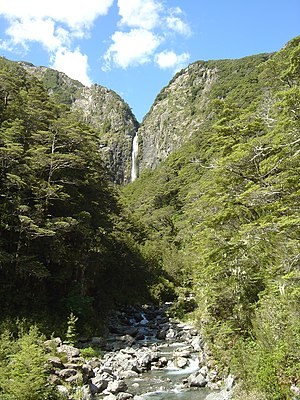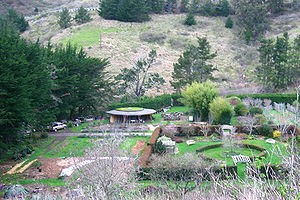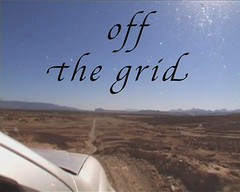Elaine has been an environmental campaigner for more than a decade, focusing on issues of climate change and social justice. She speaks and writes widely on green issues and is a member of Counterfire.
The UN Climate talks in Lima in December 2014 saw an important milestone, a draft negotiating text setting a goal of full decarbonisation for participating countries by 2050 and negative emissions by 2100.
There is of course many a slip between a draft negotiating text and the final version of the next treaty on climate change, but the fact that the effective demise of the fossil fuel industry is even being considered is an encouraging development.
Leaving aside the point that decarbonisation by 2050, let alone 2100, without significant emissions reductions now would be far too late to avoid the most catastrophic effects of runaway climate change, the most obvious danger is that in the UK at least the fossil fuel industry’s loss will simply be the nuclear industry’s gain.
This is not just because under the EU's energy goals for 2030, the UK is allowed to meet its commitment to generate 27% of its electricity from renewables through nuclear power and fracking (although this was hardly helpful).
Nuclear power also benefits from the widespread belief, even among greens who support renewable energy, that renewables on their own cannot supply all of our power requirements. A recent survey of self-identified greens in the UK summed up the prevailing view:
‘I should say that I’m extremely pro-renewables, but I don’t believe they can do all the heavy lifting. I agree with the vast majority of survey respondents that local opposition may severely limit the potential of renewables in the UK, but I believe that even if they could achieve their potential we’d still be left with a requirement to drastically reduce our energy consumption. Modelling around energy take-back suggests to me that while desirable this is extremely unlikely to happen.’That this should still be a mainstream green view of renewables is a little surprising, given the number of studies over recent years establishing that renewables are able to supply all our energy requirements without recourse to nuclear or fossil fuels {see for example Mark Z Jacobson and Mark A Delucchi, ‘Providing all global energy with wind, water, and solar power’, Energy Policy 39, (2010)}.
Part of the problem has perhaps been that these have largely been academic rather than popular studies, so have had little effect on the general consensus. The Burning Answer on the other hand is written explicitly for the lay reader and in this sense it is particularly useful here.
It takes on the seemingly commonsense view that renewables are an inherently limited form of power generation because (as Russia Today simplisically put it) they ‘only function under certain weather conditions, when the wind is blowing or the sun is shining.’
Barnham deals succinctly with some of the major myths about using solar power: that there is no power when the sun doesn’t shine; that the peak availability of solar power is not well aligned with the times of peak demand; that you need large amounts of battery storage to make it work, and the perennial old chestnut, that it is just too expensive.
He points out that while it is indeed not sunny all the time, a combination of wind and solar power can give reasonably consistent coverage as they tend to have an inverse relationship. Broadly, cloudy days in the UK are more likely to be windy than sunny ones.
An important German experiment in 2006 established by computer modelling that a combination of wind and solar power, with backup from biogas generators, would have been sufficient to supply the German electricity demand for the entire year. Whatever the weather, at no time would the lights have gone out (pp.154-6). As for solar power being expensive, on 2nd May 2012, solar power in southern Italy achieved an important first: it became too cheap to meter (p.157).
The book goes on to discuss the various options available for renewable power and heating, from windows which generate solar electricity to ground source heat pumps. Moving from the proven technologies to advances currently at the development stage, it ranges from solar fuel cells which could, among other things, increase the range of electric cars to a point where they could be real competition to petrol and diesel fuelled models, to windows which generate solar electricity.
The point of this latter section is however that while renewable technologies can undoubtedly be improved by new developments, we do not need to wait for these improvements for wholesale adoption. We can fulfil our power needs and much of our transport needs with the technology we have right now.
Barnham’s focus in this discussion is on domestic power and the changes that individuals can make to their own energy infrastructure. The advantage in this approach is that it grounds what could otherwise be a rather abstract discussion of possible technological change in the practical and everyday.
The examples throughout the book of how Barnham himself has switched to renewable electricity generation at home also have the effect of clarifying what the quotidian experience of living with these technologies would be, emphasising that this really is a possible and comfortable way to live. This makes for an interesting read and an invaluable primer for anyone considering how they could reduce their own carbon footprint, but there is a problem.
It is inevitable that a concentration on individual action conveys the implication that the UK shift to renewable power under discussion will only be achieved individual by individual, by the actions which the book spends so much time presenting.
The concentration on domestic changes which individuals can make now therefore, whether intentionally nor not, implies a political judgement that people’s time and energy should go into sourcing their own ground source heat pump, rather than, say, campaigning for large-scale renewable generation to provide a significant percentage of the power on the grid.
Given the government’s lack of enthusiasm for renewables, it is easy to see how Barnham could have concluded that the only way we will get renewable energy generation is house by house. However, he does not seem particularly aware of the number of people whose circumstances would exclude them from a solar revolution brought about in this way.
Towards the end of the book, he lists ten things that ‘we can do individually’. Six of these involve fairly significant expenditure which would be out of many people’s reach, from replacing gas appliances and heating with electric equipment, to installing solar hot water and a ground or air source heat pump.
Even leaving aside the cost of such measures, many UK homes, particularly flats, will not have the hot water tanks needed for solar thermal heating, nor the outside space for ground or air source heat pumps. It is also not mentioned here that 35% of people don’t own their own home and are therefore unable to make any such changes to it at all, even if they could afford it.
The point is not that a general switch to solar and other renewable energy generation is impossible, far from it. It is that leaving it to motivated individuals to do and pay for it will mean that switching to renewable energy will remain a largely middle-class and marginal pursuit, with large numbers of people excluded. What is needed is not individual action but a general shift in our national power infrastructure, of the sort which can only really be achieved through central planning.
Of course everyone who can, should switch to renewable energy, but our focus must be on making sure the entire country can do so. Taking on a government who think fracking is environmentally-friendly and that climate change deniers make good environment ministers, may be more challenging than switching electricity suppliers, but if we are to avoid catastrophic climate change, there are no alternatives to the struggle.















